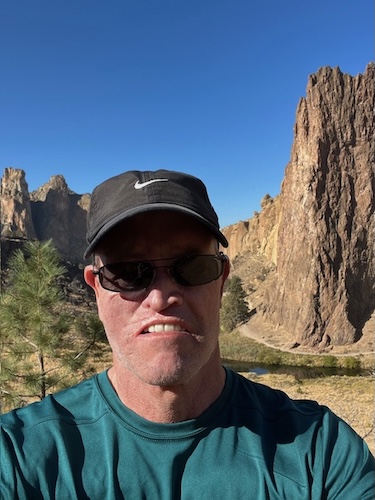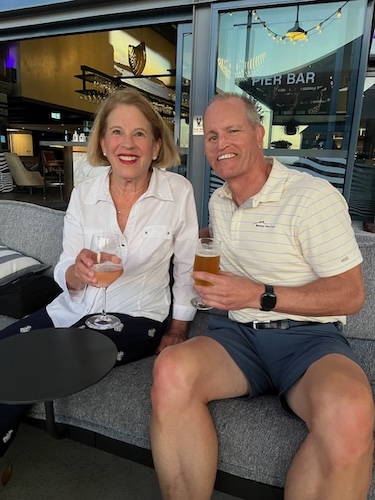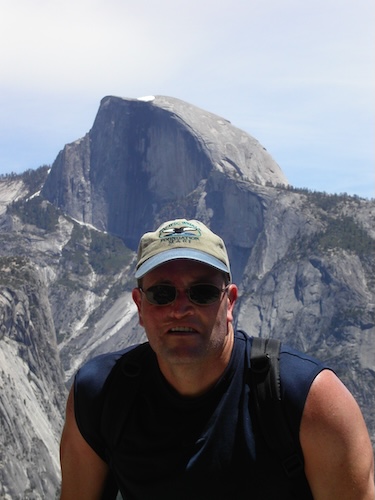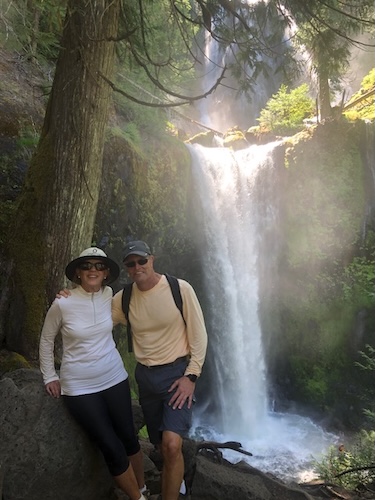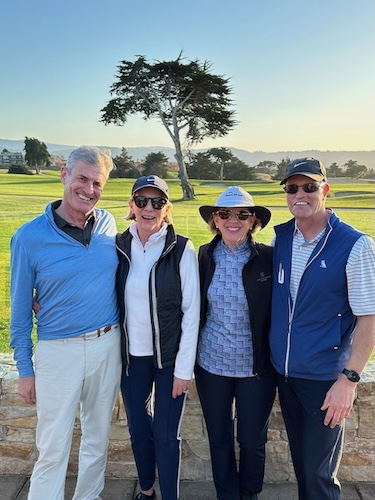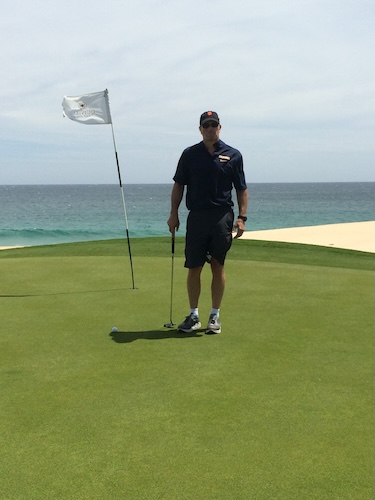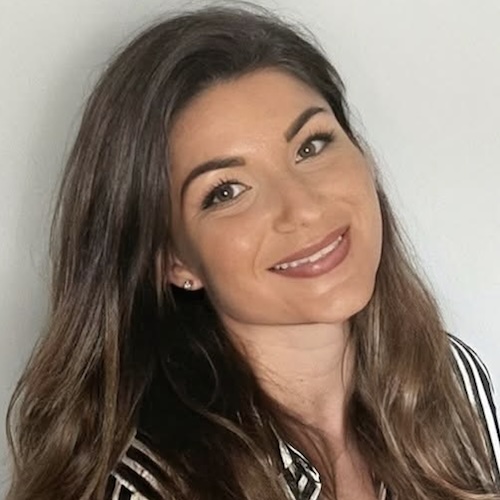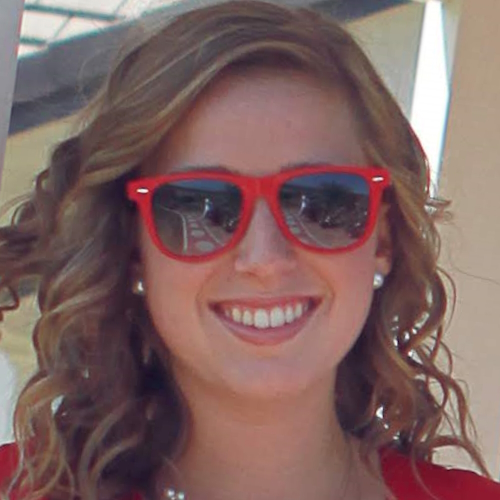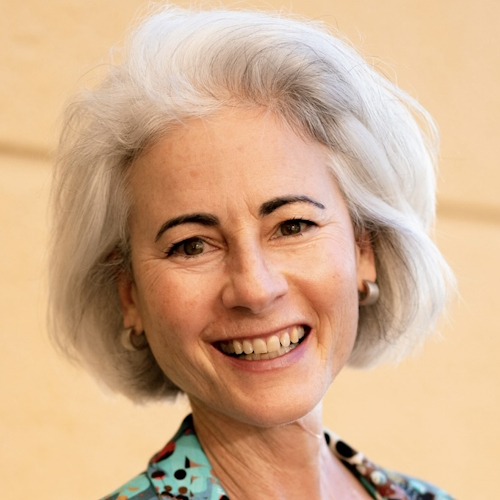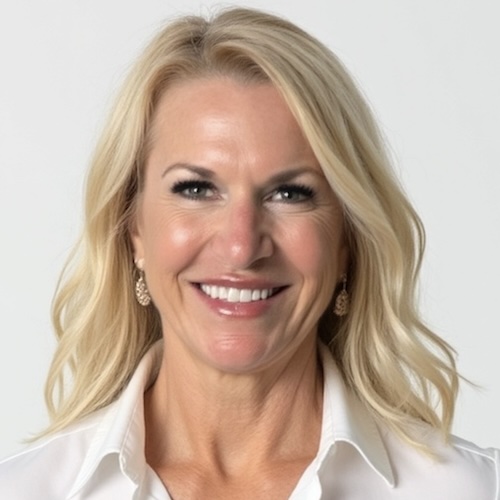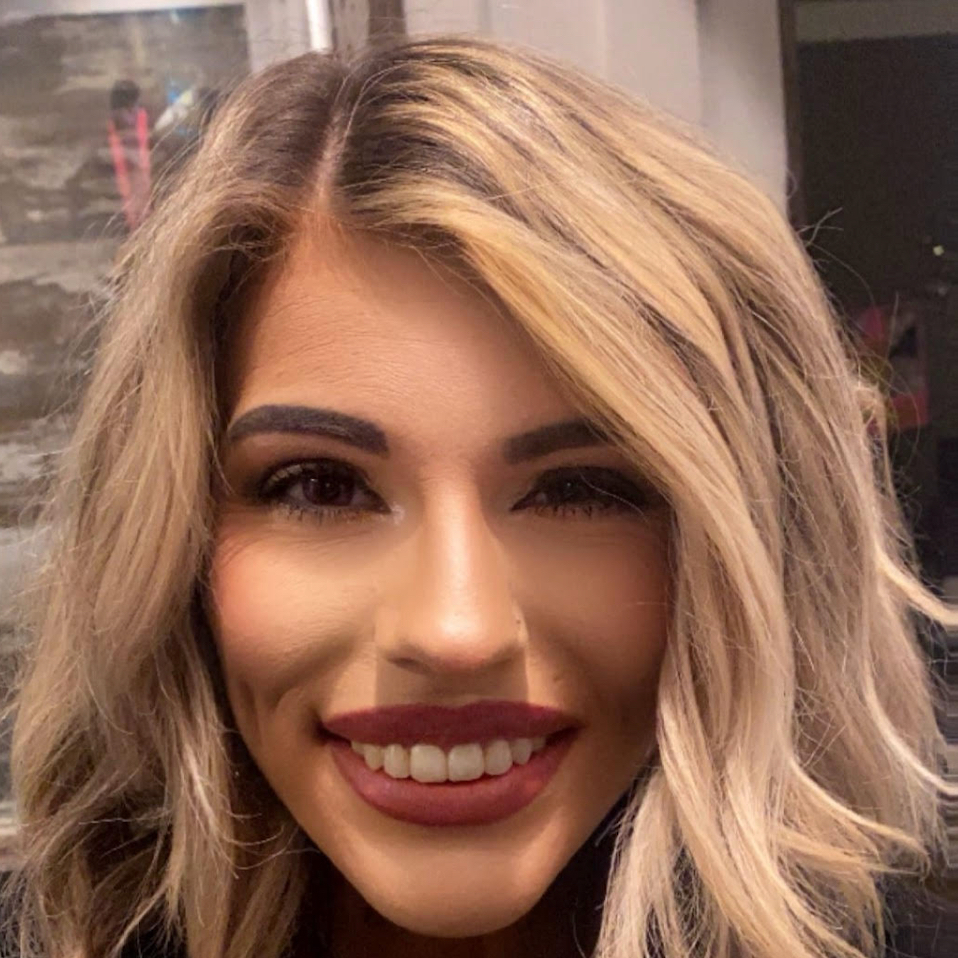How Terry Rediscovered Himself After Rare Sarcoma (Right Maxillary Fibrosarcoma)
At 20, Terry’s life took an unwelcome, unexpected turn when he was diagnosed with fibrosarcoma, a rare sarcoma or soft-tissue cancerous tumor. He was a senior at UC Berkeley, serving as president of his fraternity and juggling academics, a part-time job, and a relationship. One day, friends noticed a small bump on the right side of his nose. This seemingly unimportant detail led Terry down a path of medical consultations, during which doctors thought that a persistent lump behind his nostril was nothing more than a pimple.
Interviewed by: Nikki Murphy
Edited by: Chris Sanchez
Eventually, after weeks of uncertainty and multiple consultations, Terry was diagnosed with fibrosarcoma. (Editor’s Note: Fibrosarcoma is a very rare cancer, representing less than half of 1% of all cancers.) Terry dealt with the shock by leaning on his faith and focusing on the present rather than overwhelming himself by worrying about the future.
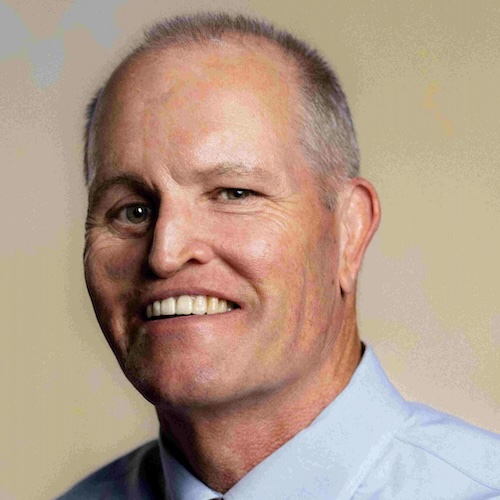
Surgery was Terry’s first line of treatment. Unfortunately, the rare sarcoma returned six months later, this time manifesting as tingling sensations and a hard mass beneath his right nostril. Terry’s medical team acted swiftly, scheduling scans and more surgeries, some involving the potential loss of his nose and eye. Terry underwent around 30 reconstructive procedures over six years, along with iridium seed implants that deliver focused and targeted amounts of radiation.
Terry focused on his mental health as a pivotal part of his healing. The physical changes affected his self-esteem, leading him to withdraw from social activities. However, he worked to regain self-confidence by setting small, achievable goals. He worked on becoming physically fit, which improved his mental well-being. He also found comfort in sharing his vulnerabilities with others through group therapy. He also found that writing a book about his experiences was another good therapeutic step. Doing so allowed him to transform his personal reflections into a resource that could help others.
Today, Terry speaks to audiences across the US about his experiences. His rare sarcoma diagnosis may have altered his appearance, but it also reshaped his perspective by helping him learn the value of authenticity and self-acceptance. He views his physical scars as symbols of healing and is grateful for the life lessons they represent.
Watch Terry’s video, and scroll down to read through his transcript, for more about:
- How a simple comment from a friend led to his rare sarcoma diagnosis
- Why Terry decided to stop having surgeries, and the important things he learned that helped him make this decision
- From UC Berkeley to the cancer ward: how his life shifted unexpectedly
- What Terry discovered about self-confidence after his rare sarcoma treatment
- How setting small goals helped him reclaim his identity
- Name: Terry H.
- Age at Diagnosis:
- 20
- Diagnosis:
- Sarcoma (Right Maxillary Fibrosarcoma)
- Symptom:
- Visible bump on right nostril that began to flare out
- Treatments:
- Surgeries: removal of tumor, reconstruction
- Radiation therapy: brachytherapy
This interview has been edited for clarity and length. This is not medical advice. Please consult with your healthcare provider to make informed treatment decisions.
The views and opinions expressed in this interview do not necessarily reflect those of The Patient Story.
- Hello. I'm Terry
- When I first noticed something was wrong
- The moment everything changed
- My cancer came back six months after surgery
- The day of surgery
- I underwent 30 reconstruction surgeries in six years
- I decided I was done with surgery
- How I managed my mental health through my diagnosis
- How my perspective on life has changed
- How I’m helping others gain self-confidence
- What I want people to know
Hello. I’m Terry
I am currently an author and speaker. I speak to audiences all over the US, and that’s really my passion. My purpose in life stemmed from a cancer experience.
I had a couple of encounters with friends who said, “Hey, I noticed there’s something on the right side of your nose. Is everything all right?”
Which was odd, because I didn’t even notice it looking in the mirror, but I guess I wasn’t that focused on looking at myself at that stage of my life.
There really wasn’t any pain or discoloration or any of that, so it just didn’t seem like it could be anything nefarious at that point.
When I first noticed something was wrong
I was living a good life. I call it my life on easy street. I was the president of my fraternity. I was a senior at UC Berkeley. I had a girlfriend I was working three days a week at a law firm in San Francisco. So somehow I was managing to do all of this stuff and never felt stressed out.
I first noticed my right nostril flaring out as a result of this lump that was forming behind it. I went to an ENT doc who basically thought it was a pimple. Being 20 years old at the time, I was pretty certain it wasn’t, but I sort of had to play the game with the doctor because I was 20. I didn’t know really what the protocol would be in terms of questioning your doctor. That’s what led me to the doctor. It became a long journey of actually concluding what I was diagnosed with, though.
I went from an ENT who finally said, “You know, let’s take a look in three weeks and see if it’s still there.” Well, in three weeks, it was still there, so he scared me into having a biopsy. Long story short, it took five weeks for me to get a diagnosis, so they couldn’t actually figure out what it was. So I ended up at Walter Reed Hospital. Before they actually did the pathology and accurately defined it as a fibrosarcoma. At that point, I was then referred to a head and neck surgeon and not an otolaryngologist, as the official term for that at UC San Francisco. It was awesome that I was referred to him because he was a spectacular guy with whom I really connected on so many levels, and I really trusted him. That’s when the journey for the treatment of my cancer began. I finally got that diagnosis after literally about eight weeks of trying to figure out what was going on.
The moment everything changed
When they originally said I had cancer. That’s actually an interesting story because the doctor, the ENT, could not tell me the truth. He was really struggling to tell me what was going on, and he had a fellow who was studying under him in the room, and the fellow actually interjected and said, “Terry, what the doctor is trying to tell you is that you have a malignancy. You have cancer.”
Number one, that was a shocking way to have it revealed. Number two, it never occurred to me that that could be possible. However, they were really quick to sort of move the conversation forward and say, “Hey, but this is cancerous. It is rare. However, we caught this in the early stages. We’re pretty sure we’re going to be able to take care of this. It shouldn’t be anything too serious.” So again, going back to the point of being 20 years old at diagnosis, I think I felt that I was somewhat invincible anyway. Right? That, oh, okay, they’re telling me I’m going to be fine. I believe that I’m not sick. I don’t feel bad. Everything seems fine. You know. So I think initially I was maybe a little blindsided, but honestly, not that freaked out by it. Certainly, my faith played a big role, so I don’t want to underestimate or understate the importance of that. And I did pray, and I tried to find courage and strength because I knew that I was going to need it. I just didn’t know when. And so I prayed for the courage and the strength to get me through this. However, at the time, I really wasn’t that concerned about what was going on because the prognosis didn’t seem that severe until much later.
Sarcoma cancer is incredibly rare. They represent less than one-half of 1% of all cancers. The problem is they don’t know a lot about them. There aren’t a lot at this time, especially. There weren’t a lot of specialists. There weren’t sarcoma centers back in 1985 like there are now. Mine was fibrosarcoma, an even more rare form of a sarcoma cancer. I wasn’t someone who wanted to go and learn about what my odds are, what my odds were. I didn’t really want to know what was ahead of me. I sort of felt like I’m just going to tackle this one day at a time, and I don’t want to get ahead of myself. That’s sort of the way I was fortunate to live my life because I didn’t allow myself to get into this anxiety cycle of worrying too much. And you could also argue that maybe I was somewhat ignorant, that I was not someone who was seeking the answers that I would today at my age. But again, I think it goes back to the feeling that I had the world by the tail. I had this really rare form of cancer that they didn’t know much about, but they also told me that it wasn’t something that was going to be a serious situation. So I sort of moved about my life.
My cancer came back six months after surgery
Initially, they said we’re just going to treat this with surgery and surgery only. I believe that now, keep in mind, this is pre-internet. There wasn’t information as readily available as there is now, but I sort of accepted that. Okay, that’s what they’re telling me; they’re the experts. This is UC San Francisco. This is a great institution. I trust them. So that’s what was told to me. That’s what I took. I moved on with my life. And that recurrence happened six months later, pretty quickly.
What started to transpire was that I started to feel these tingling sensations in my cheek, my right cheek. And it felt like ants were crawling through my skin. It’s hard to describe. But that’s the best way I can describe it. And when I started to feel that, I started poking around, and I noticed that I felt this hard mass on my upper lip here. Below my right nostril. That’s where I felt it initially. I knew I needed to go back to the doctor. That was the beginning of figuring out that there was a recurrence going on. And so it was an acceleration and that’s really when I began to realize, wow, this is a serious situation because it was like, “We need a CAT scan today, I’m going to schedule you for surgery.”And I was like, “What do you mean you’re scheduling me for surgery? What’s going on? You know, we don’t even have the CT scan results.” But he knew what was going on, and he was doing these backup plans just so he had the information. Right? But he knew that the tumor had recurred. And then I was scheduled for the tumor board, which is a whole other experience that was eye-opening in ways that I never would have anticipated. So that’s what led to my doctor finally telling me, after the tumor board, what was ahead of me and what this next procedure would look like.
My parents were with me. One of my brothers was with me. And we sat in a waiting room for hours. And kept waiting and waiting and waiting. And there was no information coming back to us. We had no idea why we were waiting so long. When my doctor reappeared, he came in and he said, “You know, we’ve had our discussion. And, you know, I’m going to be honest with you. We spent most of the time at the tumor board talking about your case. Your case is very complicated. It’s complex,” blah, blah, blah, blah. And I sort of knew this going in, because I was examined by every single one of these 15 doctors. They literally came in and examined me and felt me and looked at me and gave me weird glances. I sort of had this bad feeling based on the way they interacted with me. But he came in and he said, “You know, Terry, this is now a very serious situation. We’re probably going to have to remove part of your nose. We might have to remove your right eye. We’re probably going to do a whole bunch of stuff, and I don’t know exactly what we’re going to have to do until we get in there. And so, again, 21 years old, thinking about losing half my nose. But I’ll tell you the most important part of what he told me; it was losing my eye. That freaked me out more than anything else. And that’s when I really started to get emotional. Right. And so then, you know, I had my own emotional experience following that meeting, but yeah, that was a whole different world now that I was waking up to.
The day of surgery
I went in for the procedure again, not really knowing what was going to happen because they didn’t really know. I just knew it was going to be serious. So I had the procedure, and the one thing I’ll never forget is waking up in the recovery room and not being able to open my eyes and starting to panic, thinking, “Oh my God, they’ve removed my eye.” And so I started asking for help. My procedure went much longer, so I was now into the evening hours. So I think I was the only patient left in the recovery room. So it was dark and quiet, and so finally a recovery room nurse came over and she said, “What can I do to help you feel better?” And I said, “What’s going on with my eye?” She started to rub it with some kind of cotton, and I could start to see. So then I realized, “Oh, my God, I have my eye.” That relieves some of that stress. But then I was carted to my room, and the reality of the situation didn’t really occur to me until the next day because I was so out of it that night.
I think we’re all familiar with the Elephant Man. That’s when I looked in the mirror. I thought, oh, my God, I’m the Elephant Man. I had this delta pectoral flap, they call it, from my chest attached to my face. So I had all this tissue looking like a huge sausage attached to my face. And the idea there was that they had to get a full-thickness skin graft to create an environment where they could actually transplant tissue to my face. So that was over two weeks that that was going to sit there on my face. So they told me that I would be there for at least two weeks. I wasn’t leaving the hospital for that period of time. And looking at my face, you know, I could tell my nose was all messed up. Lots of blood, lots of stitches. But the interesting thing is that my eyes looked symmetrical at that point. I noticed that they look symmetrical. My mouth still looks symmetrical. So there were things that would happen later that would cause more of the facial difference, disfigurement, whatever terms we want to use, that transpired later.
So initially, yeah, it was shocking. It looked horrible. But in hindsight, looking back, I’m like, God, you know, I didn’t look nearly as bad as I would later. And I think maybe God gave me what I could handle at that time. But again, I will say that my doctor, whom I still see to this day as a friend, is in his late 70s now. He came in immediately and said, “Terry, you know, this was serious. We’re checking the pathology. I don’t know if we’ve caught everything, but I’m telling you, we’re going to get you back to who you were.” And to me, that was critical because he gave me hope regardless of whatever the outcome was.
I underwent 30 reconstruction surgeries in six years
After that major procedure, I had to have two more procedures to remove additional malignancy that was still there. And I’ll be honest, that’s when you start to freak out even more because you start to think, man, maybe they’re never going to catch this. So those thoughts started to enter my mind. But, you know, it just became more about the aftermath of the cancer. It was the skin grafts all over my legs, and taking the plastic wrap off my skin graft. Somebody told me, “Oh, go ahead and remove it.” Well, if you’ve ever had one, you don’t want to do that. So, lots of pain from that. Never too much pain in my face. That’s what’s really interesting, right? More pain from the donor sites, from my shoulder, from my legs, from all these skin graft locations. But yeah, once I got through the cancer surgeries and was told, “Yeah, we’ve got clear margins,” then the next step was going to be radiation therapy. So six weeks of radiation, followed by 48 hours of what they call iridium seed implants that they put inside of your denture, where they cordoned me off in a room at the cancer ward, you see San Francisco with literally yellow warning tape across my door because I was radioactive for two days.
So that was kind of the final step in the treatment. And then it became reconstruction after that. And that went on for 5 or 6 years.
I decided I was done with surgery
It took a long time for me to develop the courage to even want to share my story with anybody. But a series of events transpired, and it led me to group therapy at the cancer support community. And that just opened up all these doors for me suddenly, because I did find the courage to share my vulnerabilities. And in doing that, it becomes this cathartic experience. And people said, “Oh, you know, your story is amazing. You really should write a book about it.” I’m like, yeah, right. You know? But I ended up doing that more for myself than for anybody else. Right? That catharsis that we go through when we write or journal. So that’s what I did. But when I finished the book, I got to this point in the book, and I’m like, “This doesn’t have a positive ending yet. I don’t feel that good about myself.” So it took a lot of work. It took a lot of facing challenges, taking control of my life, and making sure I had the right positive mindset before I started to feel comfortable with who I was. Once I became comfortable with who I was and decided I’m not having surgery anymore, I don’t care about trying to fix my nose, a slight tweak, or get my eye fixed. I had been doing six years of reconstruction. I’m done. I wanted to move on with my life, and that’s when I wrote the book. Well, that’s when I began to realize the power of being able to inspire people and help them in their own journeys and their own challenges. I would say I was well into my 30s, probably mid-30s, before I turned that pain into purpose and began to share the story and start to speak and try to help other people. So that’s a 15-year journey before I felt like I could turn that pain into purpose.
How I managed my mental health through my diagnosis
At that age, appearance matters a lot. And so I withdrew quite a bit at the age of 21. I withdrew from my friends. I withdrew from activities that I was used to participating in. And I knew that was unhealthy, right? I knew it wasn’t good for my soul. It wasn’t good for me. But it was really hard. So, yeah, I struggled a lot, and really didn’t feel good about myself in any way. But what I was fortunate to figure out was that I was always goal-oriented and very focused. I set goals and I achieved them. I don’t set a lot of them. I try to focus on one thing at a time. So singular focus on a single goal. To me, it makes life achievable. If you have too many priorities, you don’t have any, right? So one goal at a time. And when I reached through and got through that goal, I started to feel more confident because you believe in yourself when you achieve something, right? And so you start to celebrate your wins and feel good. One step at a time, but focusing on goals, I think, really helped me to start to feel better about myself professionally and personally.
And I’ll tell you, maybe this sounds pathetic, but one of the things I did was I knew I didn’t look good. My face didn’t look right. So I said, “Alright, I’ll just go to the gym every day.” I started working out pretty intensely, and I set all these goals. I’m going to bench this. I’m going to max out this, and, you know, you start to feel good about yourself when you exercise. At any age, I think it helps your mood and makes you feel better about yourself. It builds confidence when you feel good and you feel better about the way you look. Right? So I could control my body. I couldn’t control my face. Believe it or not, that really helped me to start to feel better about myself. Those were some of the things I did to try to bounce back. And one day at a time, one year at a time, start to rebuild who I was so that I could start to push myself out there again because I knew I had to. I didn’t want to live the way I was living.
How my perspective on life has changed
It’s going to sound funny. I probably look worse than I did in 1991. Primarily because I’ve lost so much hair. Now all these scars show. And your complexion starts to change as you age, and I think the radiation made this more red over time. My eye drooped more, my lip pulled up more because there was a cavity. So, you know, that’s there. But I will tell you that it’s all about how you feel about yourself. I mean, I don’t really look at myself in the mirror and get bummed out. I look in the mirror and I get a life perspective. I get reminded of my battle scars as a positive. And I look and I say, “Those are battle scars of healing, not of pain.” And so here’s the funny thing. When I walk down the street now, nobody ever points, kids never point at me. Kids don’t stare at me. Children don’t giggle at me. All that stuff happened when I was in my 20s. I had horrible experiences. So what’s changed? I don’t look any better. What’s changed is how I feel about myself. And I think that’s how people perceive you, right? If you feel good about yourself, people don’t notice you as something weak. I think you just blend in more. But I think people are very perceptive, right? And they see somebody with their head down who doesn’t feel good about themselves. They might look at you twice, you know, instead of just allowing me to blend in, which is what I want to be, I just want to blend in.
I’d never wish it on anyone, but I’m grateful for the experience because it gave me a life perspective. It gave me purpose. It helped me become more empathetic. Those are the gifts in disguise. So I wouldn’t trade it for anything. And I know that sounds maybe strange to some people, but I wouldn’t. I think I’m happier because of what happened to me. And again, I’m grateful. And I’m grateful to the people who cared for me. You know, I speak at nursing conferences, and I share the things that nurses did to help me get through to cope. Their focus is always on better patient outcomes. But I’ll tell you, they’re amazing people. My doctors were amazing people. So just that. Just grateful.
How I’m helping others gain self-confidence
It’s a little different depending on the audience. When I do middle schools and high schools and even colleges, it’s a little bit more about appearance and resilience. So those are great opportunities to help kids and young adults get those lessons and messages that you know, we really shouldn’t judge people at face value. So I go through this whole exercise with them in the beginning and the end to demonstrate and to help seal it in their brains that we all make judgments when we first look at people. Right? But when we get to know them just a tiny bit, we have very different perceptions of who they are. So I try to instill that kind of message for kids that age, because I think it’s important. And then we touched on medical healthcare. I speak to a lot of those audiences, even pharmaceuticals. But it’s really about sharing stories about what my health care team did for me. As a way to share with them the impact that they can have on patients.
What I want people to know
One, I don’t think it’s a bad idea to be a hypochondriac. You hear people criticize people for being hypochondriacs. I think that if you are at some level of unease about something that’s going on, go to a doctor. And I know everybody can’t afford to always do that, right? But you owe it to yourself. It gives you peace of mind. Nine times out of ten, you might be fine. But that peace of mind is just so important. Because that helps with our mental, physical, and psychological being. I would also say to people, don’t allow yourself to be consumed by your illness. When I was going through my own support groups, I found a lot of people had quit their jobs. A lot of people had sort of withdrawn from their lives to focus on taking care of themselves. And don’t get me wrong, self-care is critical. It’s really, really important. But I think you need to have some kind of purpose.
You don’t want to spend a ton of time by yourself thinking about your illness. And so if you’re not doing some level of group therapy or therapy. I think that’s really, really important to share with other people. And here’s one of the reasons why I think that when we talk to our friends and our loved ones, they usually tell us what we want to hear. And I don’t mean that in a negative way. I just think it’s that they love us. Right? So they’re always going to say, “Oh, you’re great. You’re the best, you’re going to be fine.” But when you talk to people who don’t know you, you get different perspectives about things. I think those things become even more meaningful. When they encourage, and when they tell you things that make you feel good in a weird way, I think it’s almost more impactful. I think there’s so much power in sharing your vulnerabilities with other people.

Inspired by Terry's story?
Share your story, too!
More Head and Neck Cancer Stories
Vikki F., Head and Neck Cancer (Nasal Squamous Cell Carcinoma)
Symptoms: Nosebleeds that persisted for years, nose changed in shape, nasal pain, migraines
Treatments: Surgeries (subtotal rhinectomy, reconstruction surgery including radial forearm free flap, bone grafts, and cartilage), chemoradiation
...
Alyssa N., Adenoid Cystic Carcinoma
Symptoms: Persistent jaw pain, lightning-like facial pain during the first bite of meals
Treatments: Surgery (tumor removal), radiation
...
Eva G., Oral Cancer, Stage 4
Symptoms: Sore on the tongue, which caused pain during eating and speaking; changes in the color and texture of the tissue where the sore was located
Treatments: Surgery (partial glossectomy, radical neck dissection, reconstruction), radiation
...
Teresa B., Recurrent Breast Cancer (Hormone-Positive), Oral Cancer (Lip Cancer), and Skin Cancer (Melanoma)
Symptoms: Lip cancer: chapped lips & a pimple-like growth on lip, breast cancer: enlarged left breast with lump, melanoma: none
Treatments: Surgeries (bilateral mastectomy with reconstruction, lumpectomy, craniotomy, Mohs, surgery, wide local excision), hormone therapy, radiation therapy
...
Kandi B., Adenoid Cystic Carcinoma, Stage 3
Symptoms: Fatigue, headaches, depression, occasional feeling of tongue being on fire or inflamed, appearance of tumor on salivary gland on tongue
Treatment: Surgery
...
